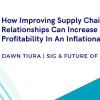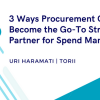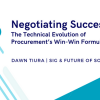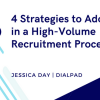It’s clear that procurement has evolved over the past several years. And it continues to evolve. Digitisation has helped take it from what was viewed as a back office function to a key differentiator and value driver. But why have some procurement organisations soared with the change while others lag behind?
What do winners know that others don’t? What makes some procurement organisations more efficient or effective, more successful, more innovative, more on top of their game?
Think differently
According to the SAP Ariba Benchmark Survey, an annual measure that analyses billions in spend data across more than 3,500 categories for companies connected to the Ariba Network, winners achieve best-in-class status in large part because they understand the secrets of procurement and step out of the proverbial box and tap into technology, big data and digital networks to fuel a simple, more collaborative source-to-pay process. In addition, best-in-class companies:
1. Play a strategic role in procurement and manage more spend than average performers
2. Have an integrated platform for managing all procurement spend and see higher sourcing savings
3. Manage procure-to-pay from end-to-end with a single point of accountability
4. Drive more spend toward contract and e-catalogs fueling greater compliance
5. Leverage the technology and insights of business networks to gain a clear view into and analysis of transaction data, resulting in payment optimisation and lower total costs
6. Provide an intuitive, self-service environment in which purchasing can be done in an easy and compliant manner, driving down requisition-to-order cycle times
7. Automate key tasks such as PO and invoice processing to increase administrative efficiency
Numbers don’t lie
When it comes to procurement success, the differences between top performers and average performers are striking in many cases. Take “secret” No. 1: play a strategic role and manage more spend than average performers. Among those companies surveyed, top performers had 80 per cent of spend under management, average performers, only 58.8 per cent.
What accounts for the difference? Top performers have a seat at the leadership table. They're a part of the business in making decisions. They're part of the planning, budgeting, and financial process. They also ensure that they're working collaboratively with their stakeholders to ensure that procurement is viewed as a trusted business adviser, not an administrator or a gatekeeper.
When it comes to the second “secret,” having an integrated platform for managing all procurement spend and leading the organisation through regular stakeholder spend reviews results in higher sourcing savings. The ability to collect and analyse all data via in a single place and then conduct quarterly - or even more frequent - meetings with the businesses to review all their spend - opens the door to completely new opportunities to identify savings and drive them to the bottom line.
Imagine going to the business unit to talk to them about their spend from the previous year. "Here is who you have spent money with. What is your plan for the upcoming year? What spend categories can we help you source? What's your priority for the upcoming year? Are there any capital projects that we can help out with?"
In understanding the business and requirements of stakeholders, procurement can negotiate optimal agreements that fulfill them.
The third “secret” that sets top performers apart is that they manage procure-to-pay as an end-to-end process with a single point of accountability, and this really drives higher purchase order (PO) and invoicing efficiency. According to survey results show that best-in-class organisations have 99.6 per cent of their total PO count electronic, while average performers are at just 67.2 per cent and their total electronic PO spend is 94.5 per cent of the total, while average performers are at just 42 per cent.
Saving time and money
Top performers also operationalise savings after they have sourced spend categories and captured negotiated savings. The question then becomes how do they operationalise negotiated savings so that they become actual savings? And that is “secret” No. 4. Top performers manage compliance for sourced categories by creating fit-for-purpose strategies that drive more spend toward contract and electronic catalogues through a guided buying experience. Again, the numbers prove it. For the leaders, 36 per cent of PO spend is on catalogues. For average performers, this number is just 27 per cent.
“Secrets” No. 5 and 6 go hand-in-hand: top performers leverage technology and provide self-service to enable around-the-clock business. This really helps organisations drive down cycle time for PO processing. Within the oil and gas sector, for example, it's critical for organisations to get the items out to the field, because if they don't, they may jeopardise operations on a large scale.
Top performers report requisition-to-order cycles of just 1.7 days. For companies not leveraging technology to drive the process, the average is about 5.7 days.
Finally, “secret” No. 7: automate key tasks. Leading organisations have just eight full-time employees (FTEs) in operation procurement per $1 billion of spend. The average performer has 21. And for accounts payable, leaders have three FTEs as opposed to average performers who have 17. Top performers do more with less and focus on strategic work as opposed to tactical activities to drive savings and business value.
At the end of the day, leaders are willing to break with tradition and take chances. They roll the dice on success. And they win.
About the Author:








